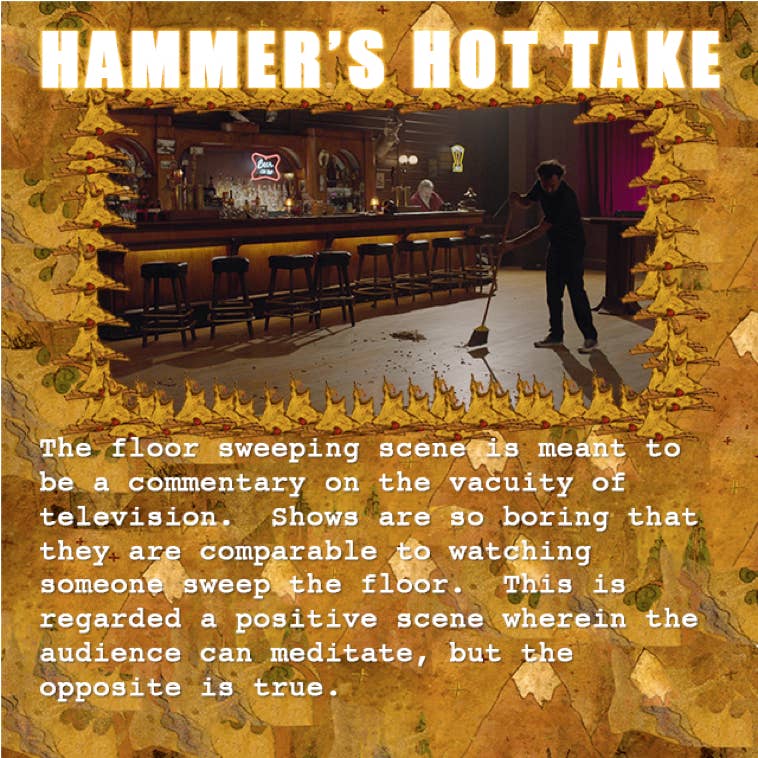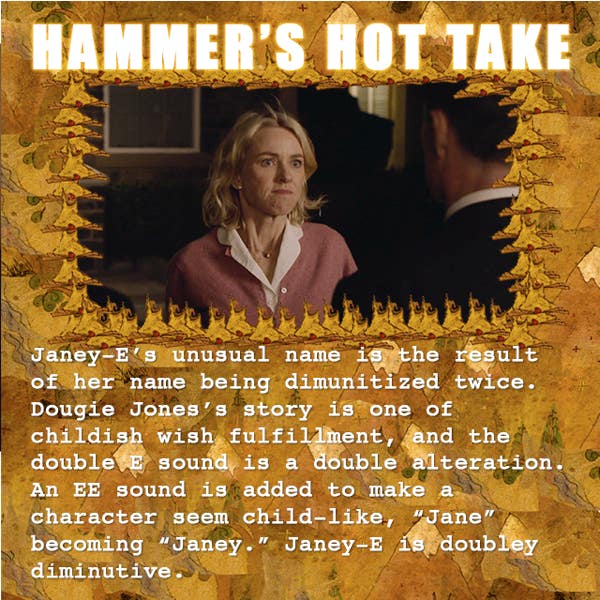The Twin Peaks Channel
The Subplots Are Bad Television, and That’s Good
by
Owen Hammer
While many Twin Peaks theories conflict with each other and the internet is filled with hot takes, bad takes and over-use of the word “Sisyphean,” there seems to be an emerging consensus that the show is a TV show about television. I would go one step further and say that Twin Peaks: The Return is a TV show that contains television.
Some people hate the fragmented structure of Twin Peaks: The Return, but I think that many of the sub-plots are actually sub-shows and it becomes easier to read the show as a critique of television in the twenty-teens that way. The story of Dougie Jones, the catatonic Cooper clone, is a kind of show-within-a-show, and the story of a grown-up Audrey Horne and her husband feels like a misconceived spin-off of Twin Peaks rather than an integrated part of the sequel. The various disgusting people in the Roadhouse whose convoluted stories neither begin nor end give us the impression of someone flipping through the channels to see if anything good is on (there isn’t). In other words, The Return is a great show about bad television.
Before I dig into this topic, let me say that much of my theorizing is inspired by the Twin Peaks explainer videos created and hosted by the mononymous Rosseter on the YouTube channel “Twin Perfect.” I credit Rosseter for all of his ideas that are incorporated (stolen?) into my work. If I have failed to credit him or anyone else for ideas that are considered original to a specific person, write me an e-mail or leave me a comment and I will rectify the situation.
Let’s start with the show-within-a-show that occupies the most running time of the series—“The Dougie Jones Show.”
“THE DOUGIE JONES SHOW” or “WE SHOULD ALL BE SO LUCKY”
In episode three, our hero, FBI Special Agent Dale Cooper (Kyle MacLachlan) finds himself in Las Vegas with his higher brain functions gone, and everyone believing him to be insurance agent Douglas “Dougie” Jones. This character is technically “Cooper-mistaken-for-Dougie,” but I will call the character Dougie Jones as I believe that it simplifies the discussion without obscuring anything. Cooper’s return to the physical universe was so traumatic as to erase his brain. The techno-mystical process causes Cooper’s shoes to come off as they will not fit into the system and Rosseter suggests that by losing his “soles” Cooper has lost his “soul.”
The real reason why we have a catatonic protagonist is that Dougie has no agency. Agency is the attribute of a character making decisions and taking actions in their interests. The lack of agency is often attributed to under-written female characters by feminist critics who identify the woman as a mere conduit for the stories of the male characters. But you don’t need to be a misogynist to write a character with no agency; you just need to be a bad writer. Remember, I’m not talking about David Lynch, I’m talking about a fictional, off-screen writer of “The Dougie Jones Show.”
Without agency, Dougie, or any such character, has to rely on luck. Luck is very important to the story of Dougie Jones and Rosseter suggests that this inspired the Las Vegas setting. Dougie is an agent for an insurance company that insures casinos. It gambles on gambling.
Dougie materializes in a vacant house in a new development in Las Vegas shortly after the Real Dougie has had sex with a prostitute named Jade (Nafessa Williams). Dougie’s first stroke of luck is that Jade—and later every other character—accepts his diminished capacity without question.
Jade drives Dougie to the Silver Mustang casino. Unable to understand Jade’s instructions to get help, Dougie begins playing the slot machines and wins almost half a million dollars. It is now clear that Dougie—now nicknamed “Mr. Jackpot”—has impossibly good luck. Dougie can identify which machine will pay off as the light from the extra-dimensional “Black Lodge” shines over it. I will discuss the Black Lodge Entities in a future essay, but for now, know that they are mystical beings guiding Dougie, almost guardian angels.
It is now clear that Dougie’s good luck is so improbable that we are not watching a drama, we are watching wish-fulfillment. One corollary of this is that the story is very childish. A character simply getting what he wants is a childish premise and I assume that the off-screen writer of “The Dougie Jones Show” is equally childish. Dougie doesn’t get a check from the casino, but rather a cartoonish, canvas bag filled with cash. Later, characters will talk in equally childishly simplistic terms.
Childishness is key to Dougie’s story. Often the humor of the show—Twin Peaks, the real show—involves Dougie simply being an idiot. As we—the real audience—laugh at him, Dougie’s son laughs at him as well as if we and the boy are watching the same TV show. The son—Sonny Jim (Pierce Gagnon)—is the only consistently happy character and the only character that is literally a child. The characters have diminutive names ending in EE sounds—Sonny (Jim), Dougie, Dougie’s wife Janey-E (Naomi Watts), Rodney, Bradley, Mandie, Candie and Sandie. It seems that Janey-E’s name has been diminutized twice by an overzealous show runner.
Dougie has the great luck to be married to the beautiful Janey-E and have a great kid in Sonny Jim. The real Dougie has left our hero on the hook with loan sharks for $50,000 but Janey-E reads them the riot act and leaves them with $25,000. What incredible luck. Not only does Dougie’s smart and beautiful wife strong-arm the bad guys for a 50% discount, but even if she didn’t, his casino winnings would cover it.
Dougie is also lucky in trivial matters. He innocently steals coffee from his co-worker Frank (Bob Stephenson), and Frank is mad. While this wouldn’t lead to high drama, it is at least a stumbling block for Dougie. Or rather, it would be, except that, inexplicably, intern Phil Bisby (Josh Fadem) has a green tea latte which Frank loves. I mean, he loves it with an intense passion as if something inside him has awakened. This has to be called good luck for Dougie.
Guided by golden light from beyond, Dougie unintentionally validates a thirty-million-dollar claim filed by gangsters Bradley and Rodney Mitchum (Jim Belushi and Robert Knepper). Dougie’s boss, Bushnell “Bud” Mullins (Don Murray) calls him on the carpet. Surely this is catastrophic for the company and Dougie’s career is over. But no. Mullins took out a policy on his company’s policy and in fact he will make money on the claim. This is probably illegal, mathematically impossible, or both, but it doesn’t matter. Dougie can’t lose.
But Dougie’s luck is most evident when it does the most important thing and saves his life.
DOUGIE JONES: HARD TO KILL, HARD TO BELIEVE
Cooper is in the role of Dougie Jones as part of an admittedly convoluted plot by the series antagonist Mr. C (Kyle MacLachlan) another copy of Dale Cooper. Helpless in Las Vegas, Dougie is vulnerable to Mr. C’s motley band of assassins. However, Dougie survives six assassination attempts, mostly through no action on his part, and Mr. C’s criminal network is decimated in the attempts, leaving him vulnerable in the final act when Dougie becomes Cooper again. Here is a chart showing the timeline of assassination attempts involving the Mr. C network of villains.
ATTEMPT #1: Mr. C hires Duncan Todd (Patrick Fischler), who hires Lorraine (Tammie Baird), who hires a Hitman, Jake (Bill Tangradi), to shoot Dougie. Jake attempts to shoot Dougie with a sniper rifle while Dougie is being driven into town by Jade, but Dougie bends over to pick up a key and is out of Jake’s view at the exact second that Jake is looking through the scope.
ATTEMPT #2: Jake assumes that Dougie is still in the house and he has his minion Gene (Greg Vrotsos) attach a bomb to Dougie’s car. An unrelated trio of car thieves just happens to try to steal Dougie’s car and ignite the bomb which is sufficiently powerful to immolate all three of them.
As is often the case in genre fiction, an assassin who fails is murdered by the next person in line to take the contract. Tiny, ice-pick wielding hitman Ike "The Spike" Stadtler (Christophe Zajac-Denek) kills Lorraine and possibly some of her co-workers and then goes after Dougie.
Another comment about luck. Before he is assigned the hit, Ike is in his hotel room rolling two dice and cataloguing the results in a notebook. This is so bizarre since such an act would be pointless as you would only be recording random numbers. Has Ike figured out that “luck” isn’t working like it’s supposed to in this universe?
ATTEMPT #3: Having destroyed his beloved signature weapon—an ice-pick—killing Lorraine, Ike comes at Dougie with a gun. For reasons too complicated to explain here, Dougie moves “like a cobra” and disarms Ike, almost literally as Dougie tears off a hunk of Ike’s palm in the scuffle. Ike flees and is later easily apprehended by the police as they have, not just a palm print, but his palm (in fact, the good luck for the police causes them great amusement).
Before he is arrested, Ike reports his failure by saying “no cigar”—a phrase popularized by games of chance when losers would be denied a literal cigar as a prize.
Another note on Ike: Gangsters Bradley and Rodney Mitchum see Ike’s arrest on TV and plan to call off a hit that they had ordered on Ike. What if Ike had delayed his hit on Dougie? Is it possible that yet another hitman, one with the contract from the Mitchum Brothers, would have killed Ike before he even attempted to kill Dougie? It’s as if, in this universe, Dougie’s good luck is constituted by contingency plans.
ATTEMPT #4: Duncan Todd, knowing that he may share Lorraine’s fate, steps up his game. He contacts Dougie’s crooked associate Anthony Sinclair (Tom Sizemore) and tells him to initiate a complicated plan to get the Mitchum Brothers to kill Dougie or else kill Dougie himself.
The plan is to convince the Mitchum Brothers that Dougie is their enemy and let them kill him. The plan is premised on the assumption that Dougie’s company will not pay the Mitchum Brothers their thirty-million-dollar insurance claim; however, as I recounted earlier, Dougie’s boss Mullins is paying the claim, which means that Anthony’s plan would appear to be doomed to failure. However, being incommunicative, Dougie would surely be unable to explain this before the Mitchum Brothers killed him.
In typical Twin Peaks logic, the only thing that can make the Mitchum Brothers friends instead of enemies with Dougie is the gift of a cherry pie. I won’t go into the dynamics of desserts as a transcendent value in Twin Peaks, but suffice to say that this makes sense. But what are the odds that Dougie would have a cherry pie? “A million to one” calculates Bradley (I assume it to be much, much lower).
Of course, “Mike” (Al Strobel)—Dougie’s guardian angel—calls Dougie into a café before the attempted assassination and instructs him to buy a cherry pie. Upon seeing the pie, the Mitchum Brothers do a 180 and become friends and allies with Dougie, talking about their change of heart in unnatural, expositional ways. They take Dougie to dinner, where we discover that Dougie’s luck is transitive as a poor old woman from the casino, using the money from a slot machine win given away by Dougie, has turned her life around in such a profound manner that it’s parody.
ATTEMPT #5: Anthony now has to kill Dougie himself. He plots to poison Dougie’s coffee, but, before Dougie drinks it, Dougie spots dandruff (or perhaps another white powder) on Anthony’s shoulder and touches it. This act of physical contact endears Anthony to Dougie and Anthony abandons the murder plot, confesses his previous bad deeds and plans to turn himself in and squeal on his many accomplices. Dougie is credited for this conversion.
Mullins attributes it to Dougie’s inherent goodness. There is a theme of Dougie broadly representing love which plays into this scene and I hope to cover it a future essay. Right now, let’s just take note of Dougie’s incredible luck.
ATTEMPT #6: Finally, Mr. C sends his top lieutenants, Gary "Hutch" Hutchens (Tim Roth) and his wife Chantal (Jennifer Jason Leigh) to straight-up shoot Dougie. We have seen these characters successfully kill many people in other episodes. They kill Duncan Todd and his assistant before going after Dougie.
The scene is framed as a showdown of sorts, as if Dougie’s luck has run out and now the real assassins are here to take him down. Nope. A character known only as “The Polish Accountant” (Jonny Coyne) gets into an argument with the hot-headed couple and destroys them and their van with a modified pistol that shoots dozens of rounds. Remember, this character comes out of nowhere. He was not seen before and is not seen after.
There is much more to say about Chantal and Hutch, and I am guessing that the “Polish Accountant” is a reference to the financing company David Lynch co-founded in Poland and that this is more meta commentary. The point is that this is a great deus ex machina. It is unearned, dramatically. Dougie got lucky.
FINAL THOUGHTS ON DOUGIE JONES
“The Dougie Jones Show” is a puerile fantasy world free of drama where things just work out in favor of the protagonist and probably the hypothetical network executives out there in the ether of this reality assume that this is what the audiences want.
Rosseter suggests that this is presented by Lynch as what Twin Peaks would be if it were void of any dramatic core, which is represented by Laura Palmer. I think Rosseter’s interpretation is correct, but if that sounds too complicated, just know that “The Dougie Jones Show” is a terrible show.
“The Dougie Jones Show” wraps up when Cooper and other characters arrive at Twin Peaks, the town and the show (well, the show-within-a-show). This means that “The “Dougie Jones Show” takes place in the same reality as Twin Peaks. However, the remaining sub-shows do not, and this is interesting in and of itself. Let’s start with the second-most significant sub-show and the return of a fan favorite.
THE “AUDREY AND CHARLIE SHOW” OR “WE WISH SOMEONE WOULD END THIS STORY”
In the original series, Audrey Horne (Sherilyn Fenn) was known as someone who loved attention. She knew that she was a character in a TV show and she demanded the audience’s attention. Her famous scene of dancing to a song called “Audrey’s Dance” on the soundtrack has her doing a vaguely sexual dance for an almost empty cafe. She is doing the dance for us, the audience, and she knows it.
Audrey is meant to represent all the young girls who measure their worth by how much attention they get. These are the women who run off to Hollywood and have a terrible experience in the style of Lynch’s film Mulholland Drive. In fact, Mulholland Drive was originally conceived of as a Twin Peaks spin-off featuring Audrey Horne.
The sub-show with Audrey and Charlie is so separate from the rest of the story that it seems to be a separate TV show, as if that Audrey Horne spin-off did happen.
In The Return, Audrey is in a miserable marriage with a freaky-looking short man named Charlie (Clark Middleton). What is it with Lynch and evil, little people anyway? Well, it is clear that “The Dwarf” (later, renamed “The Arm”) was literally a piece of Mike. The Dwarf was the missing arm that was no longer on Mike’s body. Rosseter posits that Charlie is a piece of Audrey, the past or the passage of time. This makes sense given Charlie’s moribund office, filled with old things, including a spent hourglass.
Think about the blocking, pacing and location choices of “Audrey and Charlie” in comparison to real TV shows. Audrey and Charlie stand or sit in place in a single location, argue, and refer to more interesting things happening off-screen with other characters. Conventional wisdom is that you want to have your characters move from place to place, move locations as often as the budget will allow, and have as much of the action happen on-screen as possible. As it stands, Audrey is standing still because her life is metaphorically standing still. Events happen off-screen because they are mysterious. Some of the characters to which they refer may not even exist. A disturbing and “Lynchian” mood is created by doing things in a way that would normally seem amateurish.
I don’t know if the events of the “Audrey and Charlie Show” are all supposed to be pointless and random or if there is some meaning to be teased out. If you find it difficult to follow this, my executive summary, don’t worry; it’s most definitely designed to be a “document dump” of exposition:
Audrey is openly having an affair with Billy whom she claims to love while mocking Charlie as an ineffectual scold. Billy is missing and most of this sub-show is Audrey arguing that she and Charlie must go to the Twin Peaks mainstay, “The Roadhouse,” and find him, never clarifying why Billy would be there. Billy’s truck was stolen by the violent Chuck (Rod Rowland) and even though the truck was returned without incident, Billy disappeared. Chuck tells Audrey that Billy’s other squeeze Tina was the last to see Billy alive. According to Tina’s daughter Megan (Shane Lynch), and also occurring in Audrey’s dream, Billy appeared to Tina bleeding and hurt. Additionally, there’s an ambiguous Uncle of Megan’s (Tina’s brother?) who may or may not have been there. Megan recounts this story to her friend Sophie (Emily Stofle), who demands that Megan get off of drugs and determines that the sweater worn by Megan was stolen from Paula. Additionally, Audrey threatens Charlie with a visit from off-screen Paul if he does not do as she says.
Wow, that’s a hell of a backstory for a sub-show that doesn’t really have a dramatic arc. One more story beat that is notable, when Charlie talks to Tina on the phone, Tina tells him something so disturbing that he cannot repeat it to Audrey.
Charlie seems to be in charge of Audrey, even threatening to “end her story.” It seems that Charlie has existential power over Audrey, with advance knowledge of her actions and the ability to control her to some extent. This is consistent with Rosseter’s theory that Charlie represents the passage of time for Audrey. Audrey is controlled by the passage of time. She cannot go back to the past, the future is inevitable and the present is miserable.
One of Audrey’s most cryptic lines is her questioning if her story will become the story of the “The Little Girl Who Lives Down the Lane.” I’m inclined to agree with Rosseter’s supposition that “The Little Girl Who Lives Down the Lane” is Laura Palmer.
While Laura was physically murdered, what really killed Laura (and her cousin!) was the premature conclusion of her murder mystery. In Twin Peaks, violence is often equated with a story being ruined by premature or unnecessary closure. Audrey is afraid that “time” will lead to a tragic fate. The audience was impatient with the original series (the passage of time was the villain) so the network forced Lynch to reveal the killer prematurely, thus destroying the integrity of Twin Peaks. Charlie can harness the power of time to annihilate Audrey.
And who is Billy? Audrey’s preference for the presumably handsome and exciting Billy over the troll-like Charlie makes sense on the literal level. On the metaphorical level, Billy is a new and exciting life and Charlie is the absence of her old life. I think that Billy’s status as an off-screen character is meant to imply that this new, exciting life is impossible. His disappearance is a red herring; he was never there.
When the conversation between Charlie and Audrey circles back to going to the Roadhouse, there is a question about whether or not they could even find it. I believe that this is in reference not to the physical distance to the Roadhouse but to the metaphysical distance to the Roadhouse. The club exists in another TV show. Can they just crossover to it? They can because the Roadhouse is a sort of nexus of all these disparate realities, and this is where the structure and “rules” of the sub-shows must be explained.
The Rules of the Roadhouse, or, The Cross-Roads
In the original series, Marlon Brando’s character from The Wild Ones is just sitting in the Roadhouse, hanging out like it doesn’t matter that he’s not even part of this reality. I think that this idea was expanded to make the Roadhouse a place that anyone can enter because “clusters” of characters that seem to belong to different realities can intermingle at the Roadhouse. Ignoring the fact that Audrey comes from the main Twin Peaks story, none of the “Audrey and Charlie Show” characters ever interact with the Twin Peaks characters unless it’s at the Roadhouse.
Abbie (Elizabeth Anweis) says that earlier, when off-screen characters Mary and Clark were being romantic in a corner of the Roadhouse, they were "off in their own world.” I think that Abbie is giving us an important clue, letting us know that different parts of the Roadhouse are different realities. Mary and Clark were literally in their own world.
Let’s start with the MC (JR Starr) who has a strange attachment to the real world, meaning, for real, reality. MC introduces real musicians who perform their real songs and he refers to them in realistic terms. He refers to Eddie Vedder by his legal name—Edward Louis Severson. He calls Nine Inch Nails “The Nine Inch Nails” which is how they were incorrectly introduced by talk show hosts in the early nineties, perhaps “canonizing” the term in the mind of the MC. But most mysterious of all, he introduces the house band by the out-of-universe name of the song they play: “Audrey’s Dance.” This is the name of the song on the original soundtrack to Twin Peaks released in1990, but no one in-universe would know it by that name. If you were like me, you gasped a little when those two words came out of his mouth.
I think that the stage exists in the real world, separate, and dominant to all of the fictional worlds and their sub-strata. All of the bands are real bands that Lynch, without irony, is showcasing on his TV show. In the original series, the performer was usually Julee Cruse who was also being showcased by Lynch as a worthy musical act. This is not so strange since there are hundreds of television shows that feature musical acts. It’s not a leap to assume that characters in a fictional world can enjoy entertainment that is real in the real world.
People reading this essay critically are probably going to point out that James Hurley (James Marshall) performs at the Roadhouse and he is definitely a fictional character and his song, the in-universe creation “Just You,” is meant to be a cheesy song and not something that Lynch would present as good music. However, that’s the point: the song is so terrible that it would never live up to the Roadhouse’s high standards.
“Just You” was first performed in the original series with James singing and his two loves, Madeleine "Maddy" Ferguson (Sheryl Lee) and Donna Hayward (Lara Flynn Boyle). The irritating bubblegum song sticks out like a sore thumb. Like a dream, the scene starts in the middle, with the trio recording their performance of the song and never explaining how or why they assembled to do this. Some people thought that actor James Marshall was pursuing a music career and he had muscled Lynch into letting him do a song. As far as I can tell, this is not true, but it feels true and I think that this is on purpose. I think that the character James Hurley wants to be a musician and he forced his way into a musical number with Maddy and Donna perhaps going along with the farce to support the man they love. It’s always annoying when an actor wanting to be a musician is shoehorned into a musical number, especially if his or her character would never want to be a musician, and I think that Lynch could be making fun of that trope.
Twenty-five years later, James, a night watchman, still dreams of being a star and imagines he gets a shot to play the Roadhouse. He has two beautiful back-up singers whose presence calms the sting of his two lovers’ absence. The crowd is mesmerized, enthralled by what is essentially a cheap needle drop song. James is in love with Renée (Jessica Szohr), who is so touched by the song that she is moved to tears. In every other scene, Renee doesn’t even seem to recognize James and it’s very strange that she would be moved by such a vacuous song. All indications are that this scene is happening in James’ mind.
One last wrinkle to iron out in this explanation of separate realities: a character who exists for only one line, Bing (Riley Lynch), runs into the Double R Diner and demands, “has anyone seen Billy?” This is the only time even a mention of an “Audrey and Charlie” character occurs in Twin Peaks. Riley Lynch also appears in the band “Trouble” for a musical performance at the Roadhouse, so it appears that a real-life person has entered the fictional world of Twin Peaks to reference characters that don’t exist there. However, when Riley Lynch performs on the stage, he is credited as “Riley Lynch” member of the band “Trouble.” When he plays Bing, he is credited as an actor playing “Bing.” These are two different entities. Also, no one in the diner reacts to the cry for help. They’ve never heard of this Billy. Of course they haven’t; he doesn’t exist in their world.
AUDREY’S LAST DANCE
When Audrey and Charlie make it to the Roadhouse, they don’t really do much in the way of looking for Billy. It’s as if Billy has been forgotten, but given the pattern of plot lines dropping out of existence in David Lynch’s work, this is not surprising.
The MC announces “Audrey’s Dance” and the crowd clears the floor for Audrey to perform her trademark moves. I do not know what the MC’s motivation is, but Audrey does her dance and it is a beautiful scene. Some people find it humorous that this middle-aged woman is doing a mildly sexy dance but I do not think that this was intentional. Fenn’s performance suggests a re-blossoming, a joy, maybe even a healthy acceptance of her age and a realization that the passing of time does not mean that she has to abandon happiness.
Then a completely random character (Scott Cameron) starts a fight and this not only stops the dance but causes Audrey to abandon the idea of dancing. She seems to abandon the idea of being Audrey Horne. She asks Charlie to get her out of there, perhaps asking him to make good on his promise to “end her story.”
Apparently, Charlie complies, because Audrey appears in a solid white room, empty except for a mirror. She is surprised; then, we cut to black, and that is the end of “The Audrey and Charlie” show.
So where is Audrey? The biggest clue is the fact that her make-up is gone. It appears that this explains the mirror. Audrey has removed her make-up. When an actor has completed their work, they are “wrapped” and one of the first things they do is remove their make-up. In this case, Audrey—the character—is wrapped.
If this seems strange, remember that one of the very first shots of the first episodes of Twin Peaks back in 1990 is of Josie Packard (Joan Chen) putting on make-up. This is a clue that we are watching a performance, that the characters are doing things associated with the actors who play them, and the fourth wall is not so solid. Audrey’s exit from the show is almost a bookend to that shot.
It has been speculated that we are not seeing Audrey, but actress Sherilyn Fenn in this last shot. I think that the shot works either way. Audrey has been annihilated.
Channel Surfing
I’ll close out this essay with a quick review of the other “shows” you might see in the Roadhouse and maybe even solve one of The Return’s most enduring mysteries.
There is what I call the “Abbie and Natalie Show.” Abbie (Elizabeth Anweis) and Natalie (Ana de la Reguera) talk about off-screen characters Angela, Clark and Mary. Apparently Clark is two-timing Angela with Mary (or perhaps, vice-versa), and Angela will be angry if she finds out. Mary and Clark are the previously mentioned couple who were “in their own world” and “lots of people saw them” indicating that this is a separate TV show. Angela is already in a delicate state as her mother has died, and she has just stopped taking her medication and learning of Clark’s betrayal would be devastating.
I leave it to others to decode this. What’s significant to me is the presence of Trick (Scott Coffey). Trick enters and excitedly reports that he was almost run over by a truck and that trucks are driving around recklessly, conjuring up the image of a plague of homicidal truck drivers. Trick exits and it is learned that he was recently released from house arrest. This seems to be a confirmer from Lynch that “Truck Driver” as a symbol is important. Let’s review, first four “truck drivers” from The Return and then two earlier examples.
• Richard Horne, also consistently evil, ran over and killed a small child with a stolen truck. He later beats his grandmother and frightens his mentally disabled uncle.
• “Certifiable” Chuck, having stolen Billy’s truck, is a truck driver.
• Buella (Kathleen Deming) insults an ineffective Guard (James Croak) by calling him a truck driver.
• An unnamed Trucker (John Paulsen) is murdered by Sarah Palmer (Grace Zabriskie) after being an obnoxious jerk, his behavior bordering on sexual assault.
• In the original series, Leo Johnson (Eric Da Re), the most consistently evil character, was a professional truck driver (in spite of the fact that he is never seen actually driving a truck).
• In the movie “Fire Walk With Me,” Laura Palmer is hired as a sex worker by a truck driver and a mysterious location called the “Pink Room” appears to be a specialized brothel for truck drivers.
It seems that a “truck driver” is someone who is mean, inept, horny, or some combination of those attributes. But additionally, the act of stealing a truck is coded to be a character stealing the focus from another character. In the original series, second season villain Windom Earle (Kenneth Welsh) steals a truck from homey Pete Martell (Jack Nance). Since Windom Earle is primarily a creation of the staff who took over the show after David Lynch left, Rosseter decodes this as the post-Lynch producers stealing the actual show, Twin Peaks, from its rightful owner.
We could deduce that a “truck driver” is a violent person, but Buella’s guard is ineffective. A truck driver is someone who can only win an unfair fight and therefore seeks them out. They beat women and the mentally disabled or use a truck as their weapon, but in a fair fight they drop like a rag doll. They are violent cowards. Also, they are misogynists and thrive on purchasing sex or taking it, the idea of a meaningful relationship with a woman off the table.
If we consider the violent tendencies of the truck drivers to represent the spiritual violence done by bad television, the theft of a truck to represent creative bankruptcy and the truck itself to represent an unwieldy and inelegant entertainment product, then a “truck driver” is either a creator of, viewer of, or character in a bad TV show.
Note that most of Lynch’s truck drivers are also losers who lose by their own actions:
• Richard Horne is sacrificed by his father, Mr. C, trying to help him in his evil plan.
• Chuck gets a fractured skull picking on a small man who is deceptively strong.
• Buella’s Guard is knocked unconscious, refusing to admit defeat.
• The unnamed Trucker is murdered by Sarah Palmer but he would have survived if he just left her alone.
Truck drivers are toxic males in the real world who “drive” the creation of violent television. They represent the audience that Lynch does not wish to cater to.
Another sub-show in the Roadhouse is the “Ella and Chloe Show.” Ella (Sky Ferreira) and Chloe (Karolina Wydra) are awful. Everything that they say is either disgusting or pointlessly cryptic. Ella shows off the rash on her armpit and complains about getting fired from her crappy job for coming to work high. The two talk about “The Zebra” and “The Penguin.” I’m sure there is some Lynchian translation to the reference to two distinctly black and white animals. Black and white means simple? The point is that these two are unlikable and unwatchable, and they are chronologically the first Roadhouse sub-show so I think that they serve as an introduction to this world.
Then there is the “Ruby Show.” Ruby (Charlyne Yi) sits at a table and two large men simply lift her up and remove her. Ruby crawls on the floor and screams. Following the symbolic logic, Ruby is trying to be in a TV show and two white men effortlessly take her spot. Is Charlene Yi playing herself? Yi has spent her life trying to get her smart and quirky projects funded while mediocrity thrives. She scales the cliff face while white men jetpack past her. Note that “Ruby” is also the name of Yi’s character on the real TV show Steven Universe, perhaps a circuitous way of pointing out that Yi is Yi.
Last but not least, the sweep scene. In episode seven of The Return, an unnamed Janitor sweeps up the floor in real time. The two and half minute scene seems to last an eternity considering the conventions of TV editing. Fans have filled the internet with theories and it seems to have taken its place as one of the series’ most incomprehensible mysteries. Why did Lynch add this scene?
Well, if we follow the logic that different parts of the Roadhouse represent different TV shows or different types of TV shows, then the sweeping scene is a look into a boring and unimaginative show. There is an expression that if something is boring then watching it is like watching paint dry, but watching someone sweep the floor would also be a good idiom. Perhaps the scene is meant to be a commentary on reality TV, what with it taking place in real time. Perhaps it’s a comment on the vapidity of scripted material.
Ironically, fans love this scene and often describe it as moment of meditation, the antidote to the fast-paced blur of modern television. I think that this is the opposite of Lynch’s intention, but we’ll never know for sure.
CONCLUSION
There are many explanations for the bizarre sub-shows in Twin Peaks that never resolve and are never explained. I do not think that my theory conflicts with any of them, but rather, the presentation of bad TV tropes is the cause of the effects these theories outline. I guess I’m saying that there is no need for fans to fight over who is “right.”
The disjointed narrative taken as a whole is a surreal experience and that alone is a reason for it to exist. Additionally, the stories starting in the middle and having no resolution copies the structure of dreams.
There is a realism and comfort to Twin Peaks, created by having all these characters exist in the same universe even though not all their stories tie to the main story. It’s fun to see this kind of world building and it allows the show to be a “sandbox” for the audience’s imagination.
I think that these psychological effects are more important to Lynch than the internal logic that I posit he created. However, you cannot have one without the other. The people who insist that Twin Peaks does not have an explanation, that it is folly to try and derive one and that we should just bask in the mystery are wrong for one simple reason: if Twin Peaks had no point, it wouldn’t be weird, it would be nonsense. I have seen lots of supposedly edgy and avant-garde and weird films that are basically failed attempts to be Lynch. The bad ones are always the ones that truly defy explanation.
As a commentary on television, Twin Peaks is brilliant. For Lynch, the tragedy of bad TV is the perfect metaphor for tragedy in general.
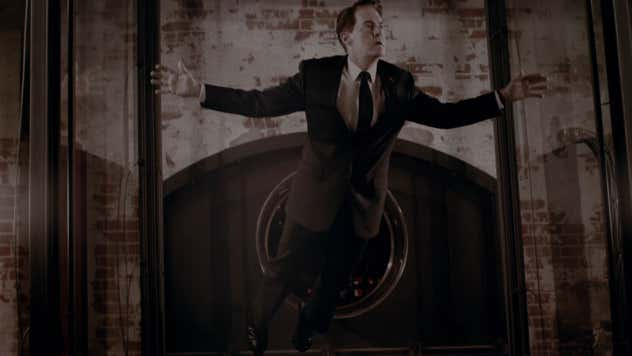
Cooper on TV.
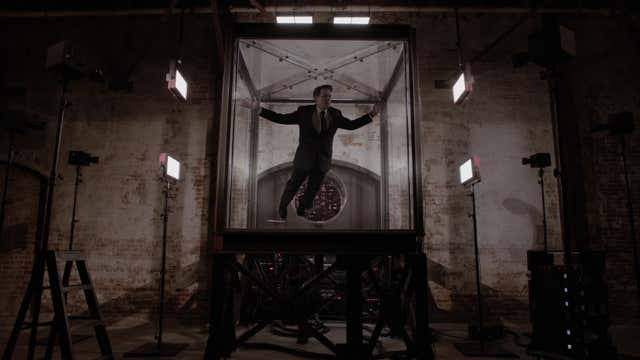
Cooper on TV on TV.
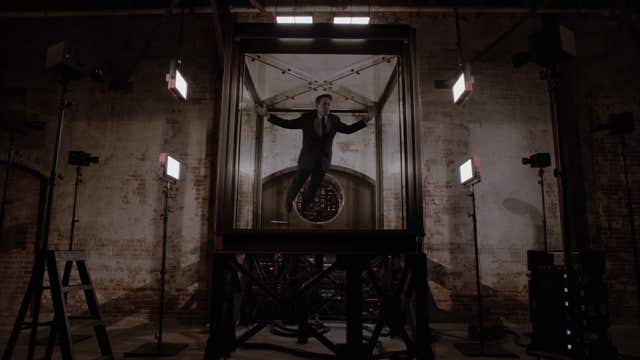
Cooper on TV on TV on TV. This sequence, which goes 11 levels deep, may be Lynch’s way of saying that shows in Twin Peaks: The Return are “nested” and there are, indeed, shows within the shows.
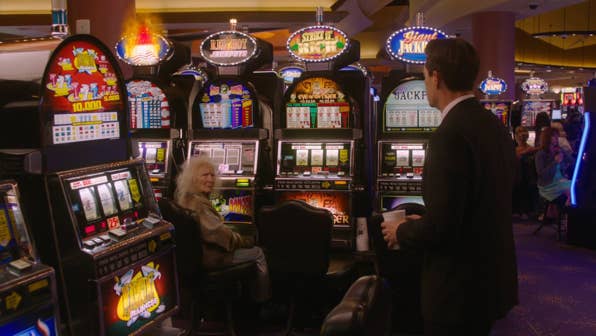
The red, gold and yellow image is the red curtain and zig-zag floor from “The Black Lodge” with a yellow glow around it. Otherwordly forces are guiding Dougie.
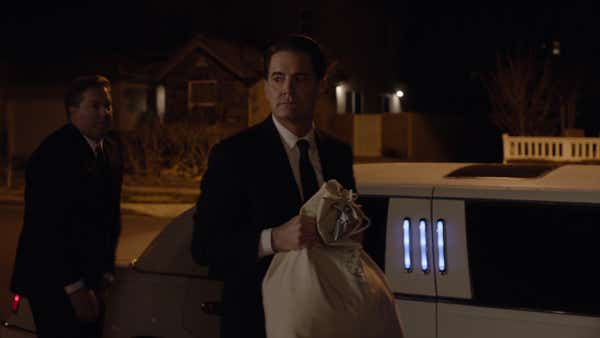
The casino gives Dougie 425,000 dollars in cash in a canvas bag. All that’s missing is a dollar sign printed on the front.
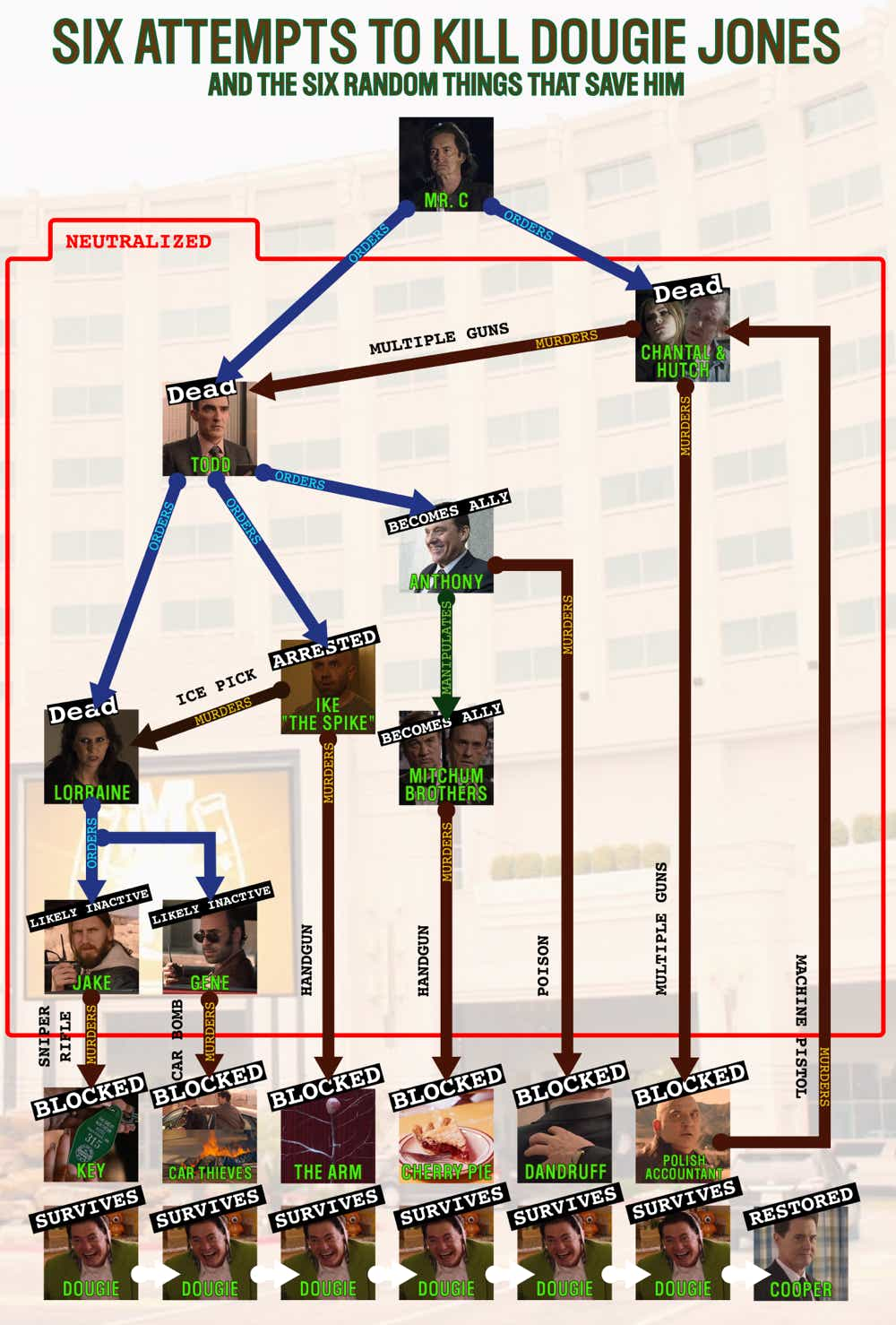
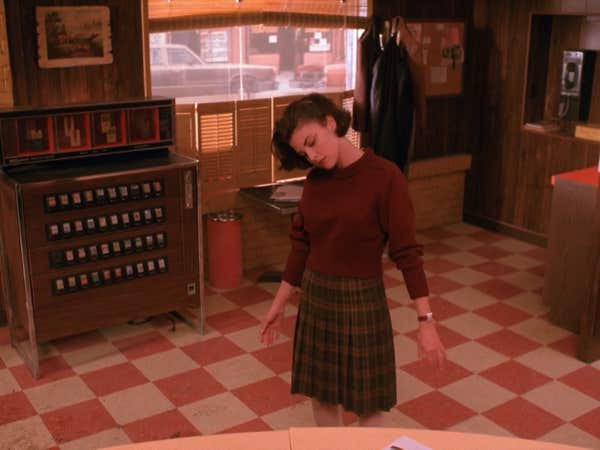
Who is Audrey dancing for? She’s dancing for us.
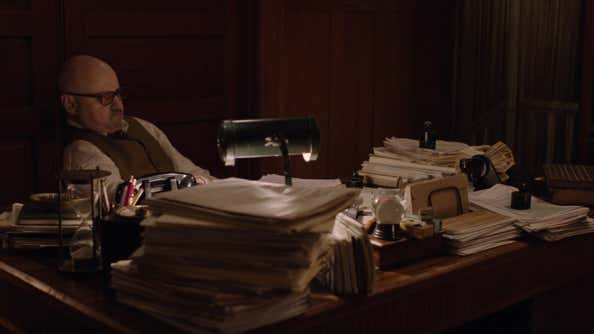
Charlie exudes the emotion of anxiety about running out of time. Note the hourglass.
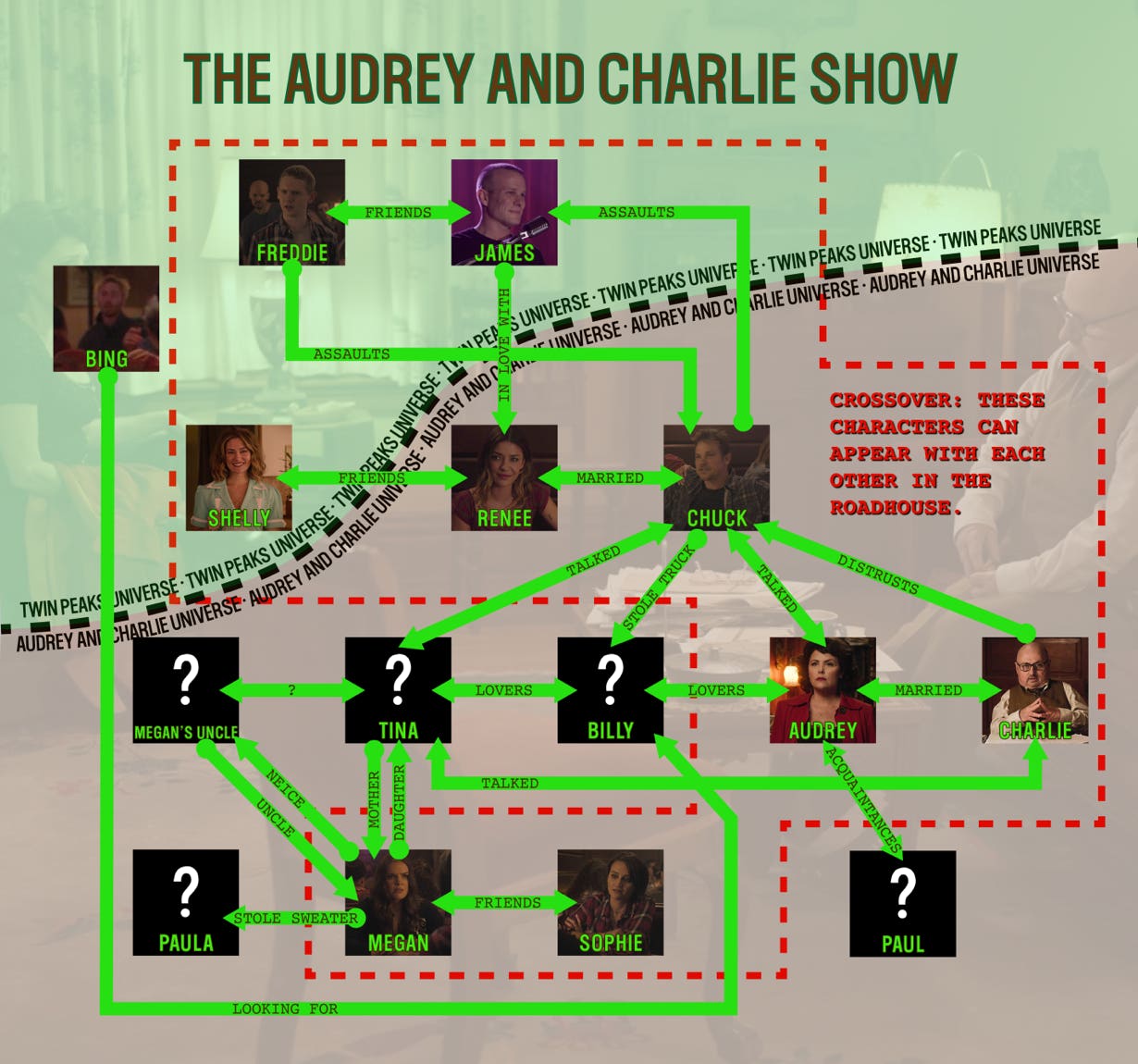
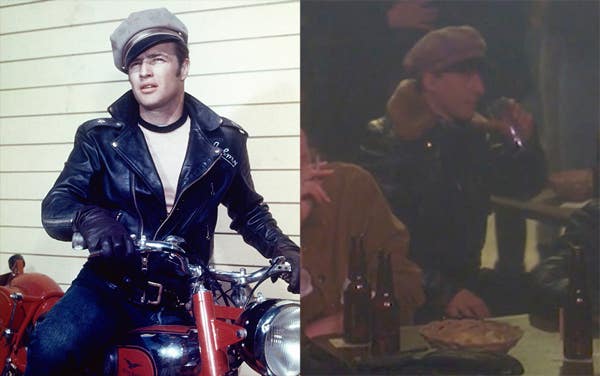
Marlon Brandon in The Wild One and a look-alike in the pilot of Twin Peaks. Twin Peaks was doing Easter eggs before it was cool.
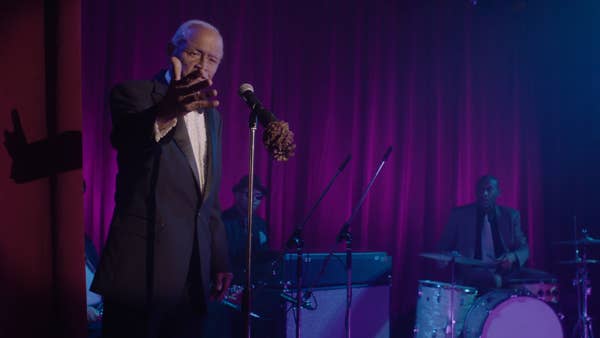
“Good Evening Ladies and Gentlemen! I own your soul!”
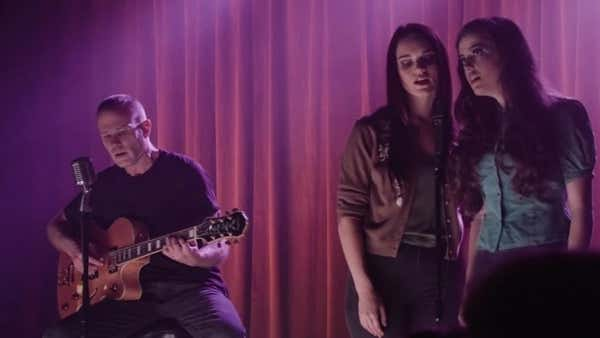
James is dreaming this sequence.
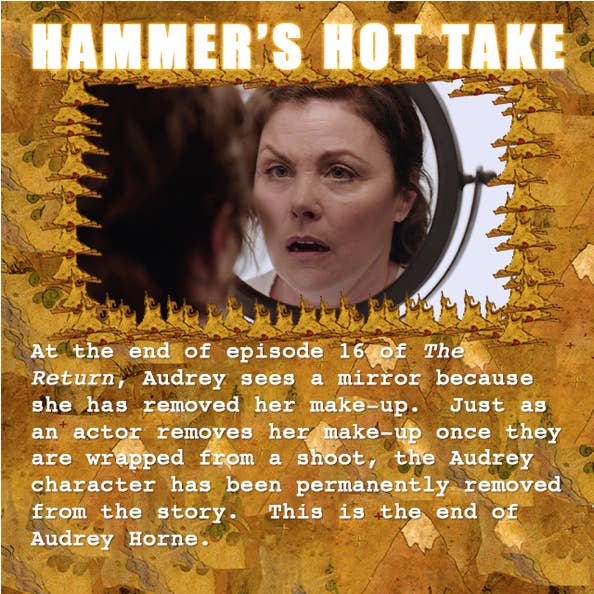

This shot, the first shot of a character in all of Twin Peaks, seems to indicate that Josie is putting on her in-universe and her out-of-universe make-up.
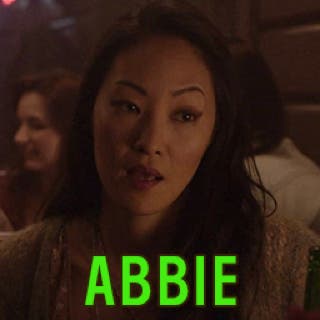
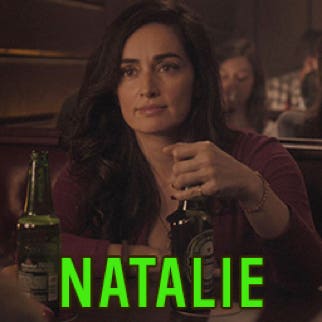
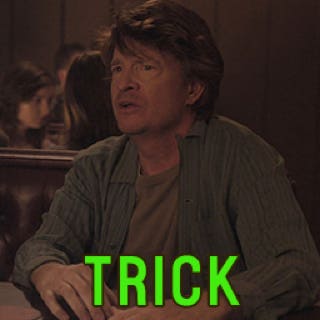
Abbie, Natalie and Trick seem to be completely irrelevant to the larger themes of Twin Peaks: The Return, but I would argue otherwise.
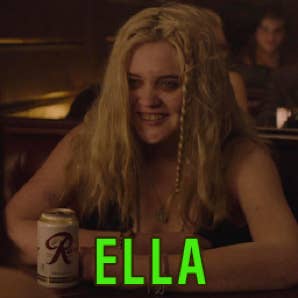
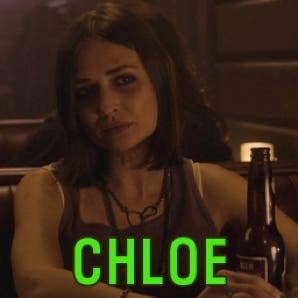
The repulsive Ella and Chloe seem to be acting out Lynch’s idea of an equally repulsive TV show—a show made for the lowest common denominator—the type person that may be symbolized by the “Truck Drivers.”
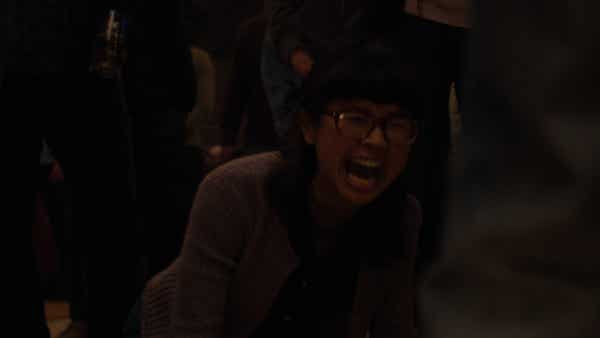
Ruby, played by Charlyne Yi, may be a representation of Charlyne Yi and her unfair treatment by Hollywood.
